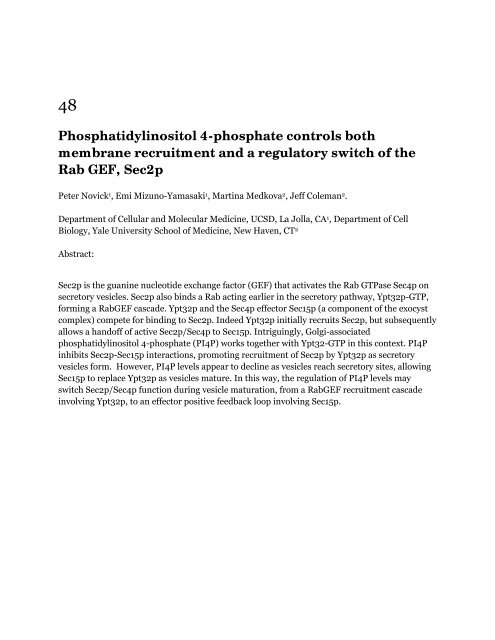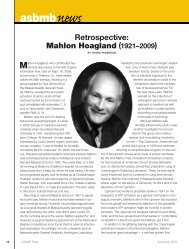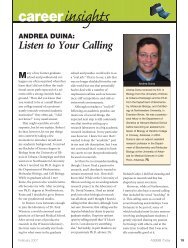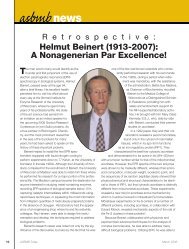View Program - asbmb
View Program - asbmb
View Program - asbmb
- TAGS
- program
- asbmb
- www.asbmb.org
You also want an ePaper? Increase the reach of your titles
YUMPU automatically turns print PDFs into web optimized ePapers that Google loves.
48<br />
Phosphatidylinositol 4-phosphate controls both<br />
membrane recruitment and a regulatory switch of the<br />
Rab GEF, Sec2p<br />
Peter Novick 1 , Emi Mizuno-Yamasaki 1 , Martina Medkova 2 , Jeff Coleman 2 .<br />
Department of Cellular and Molecular Medicine, UCSD, La Jolla, CA 1 , Department of Cell<br />
Biology, Yale University School of Medicine, New Haven, CT 2<br />
Abstract:<br />
Sec2p is the guanine nucleotide exchange factor (GEF) that activates the Rab GTPase Sec4p on<br />
secretory vesicles. Sec2p also binds a Rab acting earlier in the secretory pathway, Ypt32p-GTP,<br />
forming a RabGEF cascade. Ypt32p and the Sec4p effector Sec15p (a component of the exocyst<br />
complex) compete for binding to Sec2p. Indeed Ypt32p initially recruits Sec2p, but subsequently<br />
allows a handoff of active Sec2p/Sec4p to Sec15p. Intriguingly, Golgi-associated<br />
phosphatidylinositol 4-phosphate (PI4P) works together with Ypt32-GTP in this context. PI4P<br />
inhibits Sec2p-Sec15p interactions, promoting recruitment of Sec2p by Ypt32p as secretory<br />
vesicles form. However, PI4P levels appear to decline as vesicles reach secretory sites, allowing<br />
Sec15p to replace Ypt32p as vesicles mature. In this way, the regulation of PI4P levels may<br />
switch Sec2p/Sec4p function during vesicle maturation, from a RabGEF recruitment cascade<br />
involving Ypt32p, to an effector positive feedback loop involving Sec15p.






